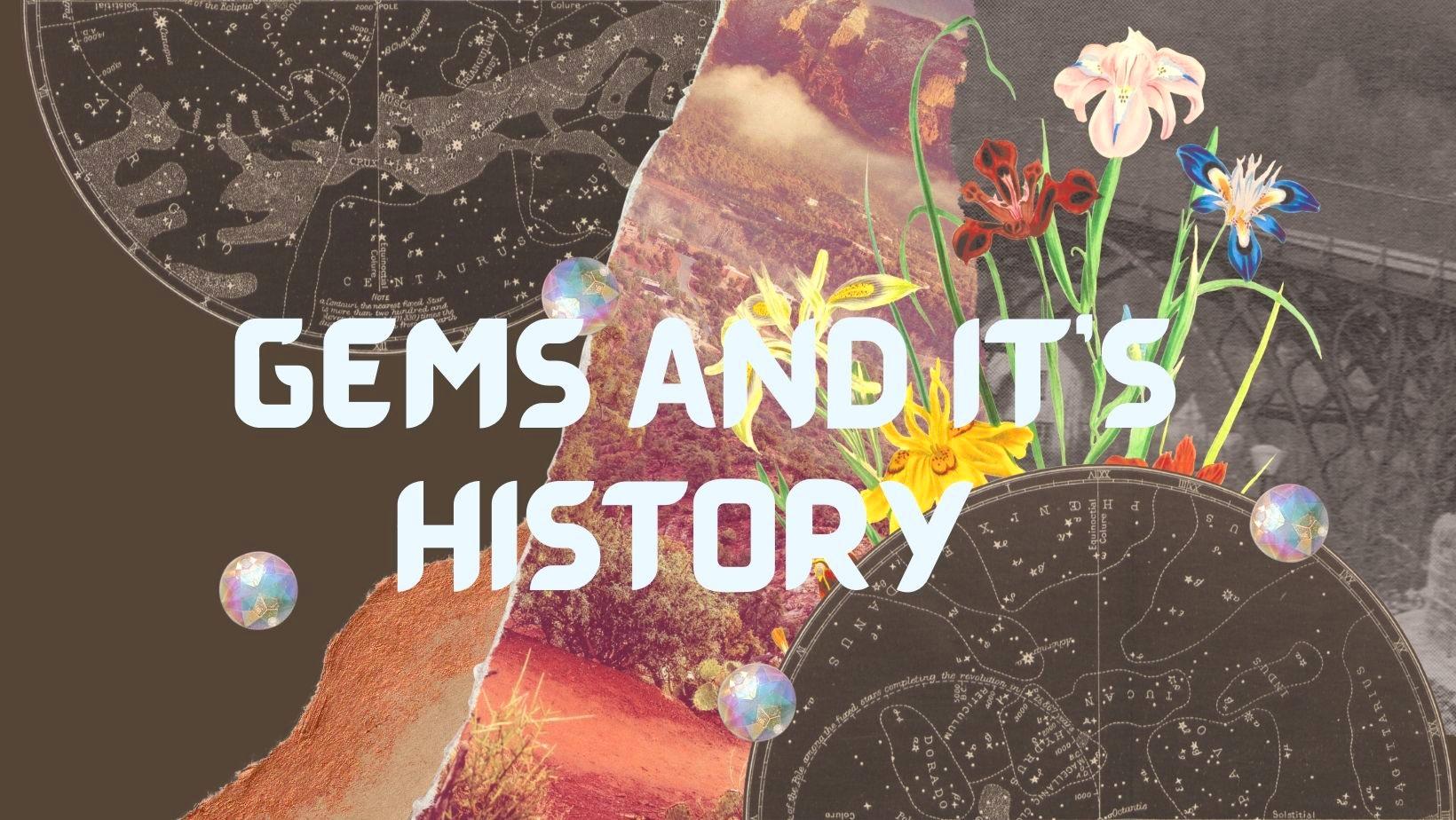- Your cart is empty
- Continue Shopping

GEMS AND IT’S HISTORY
GEMS SHINING
When a person sees an object, his first sight falls on the outer layer of that object. It is unusual to have a sudden glance at its inner layer. A special kind of luster exists on the outer layer or surface of the gems, which people sees at first sight. This brilliance or light of the gems mainly depends on how many degrees and quantities it returns the rays of light falling on it. That is to say, after hitting it or entering it, what percentage of the rays of light return. The rays which return after hitting or entering the gems are of many types depending on the quality.
OUTER LUSTER
This luster is usually visible only on the outer surface of every gem.
METALIC LUSTER
This luster is metallic, that is, after the rays of light fall on a metal, there are rays emanating from it. When light falls on a metal like brass, gold, steel, copper, silver, platinum etc. That’s why it is called metallic shining or luster.
PEARL SHINING
Pearl has its own special luster. That is why jewelers call it pearl sparkle or Mukta Jyoti. It is also called oriental glow of pearl.
RESIN GLOW
This gloss has some redness. Actually this gem. Just like the brightness. That’s why it is called Ral Shine or Raj Jyoti in Hindi.
SILKY SHINE
This shine is smooth and soft like silk. When the rays of light fall on the gems, the luster emanating from it is that of silk.Looks kind of soft. Hence it is called silky luster. Not all gems have such brilliance. Apart from these, there are also many sparkles – such as Diamond Jyoti, Dim Jyoti and Kachar Jyoti. These are also found in gems. But they do not appear in all gems.
GEMS SIZE & STRUCTURE
Most gems are found in mineral form. They are created as a result of some special physical and chemical changes in the womb of the earth. The reason for the formation of gems is heat and pressure. Some minerals are formed by long-term natural changes in the Earth’s womb. Some gems are made from the lava emanating from the volcano and others from the fuel or gases deposited inside the earth. There are also some gems that form their own separate structure due to the temperature and pressure of the earth falling on the transparent or present minerals.
Some gems get separated from the rocks and get deposited at the foot of rivers by flowing with springs and water bodies etc. Their surface becomes smooth as they flow in water. They become round or oval.
Apart from the mineral gems, the gems obtained by biological process are pearls. These are produced by oysters. The snail living inside the oyster suffers due to the entry of any foreign element inside it (in the oyster). As a result, it wraps a special type of matter around that element. In such a situation, this material becomes a pearl in a round shape. Artificial pearls are made on the basis of this principle. Coral is formed from the bones of a sea creature called ‘polyps’. The origin of Trinamani or Kaharuva is due to the conversion of resin from trees into a fossil form. It is a botanical origin.
Gemstones are mostly found embedded in rocks. Rocks are made up of a mixture of different types of mineral elements. There are three types of rocks
1. METAMORPHIC ROCK
These are a form of igneous and sedimentary rocks.
They are changed by heat and pressure in the earth’s surface to form new rocks with new mineral elements. In such a process, gems are created within them. For example, ruby can be found in marble converted from limestone by heat and pressure.
2. IGNEOUS ROCKS
These are rocks that have re-solidified from molten rocks. Molten rocks rise from the core of the earth. It is also believed that such rocks are released by volcanoes as lava. Crystals of rocks that cool slowly and take solid form are of large size. Gemstones are easily made in them.
3. SEDIMENTARY ROCK
These rocks are formed by the accumulation of fragments due to the effect of weather. With the passage of time, these rock fragments again take the form of hard rocks. They are mostly built in layers. Opal is found in such rocks in Australia. Turquoise and some other gems are also found mostly in the crevices of such rocks. They make their definite shape in the rocks and stick in the form of gems. Halite and gypsum etc. are also found in such rocks.
According to crystallography, gems in the form of crystals are not part of the rocks but only stick to them. They also have their own shape. These gems are divided into six types of systems. According to these methods, gems obtained in the form of gems are obtained in a certain shape all over the world. These systems are Cubic-System, Tetragonal System, Hexagonal System, Rhombic System, Monoclinic System and Triclinic System.
VIRTUES, RELIGIONS AND CHARACTERISTICS
The physical properties of gemstones depend on their hardness, relative gravity or density, cleavage and fractures, the chemical composition and atomic structure of the gemstone. For example, although both diamond and graphite are made of carbon, diamond is very hard and graphite is very soft. The reason for this hardness of diamond is the special bonding of the carbon atoms in it.
HARDNESS
Scratch Hardness was one of the various methods used by mineralogists to measure the hardness of precious stones. According to this, if the hardness of two stones was to be checked, then they were scratched together. The stone which could easily scratch another stone, was called the least hard and the one which did not get scratched was called the best hard. But today the hardness of gems is checked by computer. Due to this process, there is no fear of scratches or depreciation on the gems.
The hardness of the gems is checked without any damage during cutting..
Friedrich Mohs, a botanist from Vienna, had set some criteria for measuring the hardness of gems and also set base-points for quantifying hardness, which were based on the scratching technique. Mohs selected 10 different gemstones on the basis of hardness and compared them among themselves. Each of these gems could scratch a stone of a lower grade than itself and could be scratched by a gem of its higher grade. Two gems of equal hardness could not scratch each other. Thus, the Mohs hardness scale from 1 to 10 was determined to test the hardness. The distance between these points need not be the same.
According to this principle of Mohs, the hardness of every gem and precious stone can be measured. In this, the most delicate gems have been kept at number 1 and 2. Such gems are relatively weak. According to this principle, gems of grade 3 to 6 are considered medium hard and those of grade above 6 are considered hard. The limit of extremely hard gems is 8 to 10. Unfortunately, this measure of hardness did not meet the criteria of goldsmiths and jewelry makers, because not only hardness but also other chemical elements that strengthen hardness are necessary in gems, which give them uniformity and hardness for a long time.
Thus the criterion of the scratch system for hardness of gems below 7 points was not met. Because the gems below 7 would get broken or deformed due to the accumulation of dust and soil. Particles of glass or crystal were found in these gems. In the maintenance of jewelery made of such gems, it was instructed that the jewelery should be protected from dust or kept in a closed box, so that there is no fear of breaking them by any sharp object. Also, for scratch testing, sharp-edged tools should be used on a good surface of a gemstone.
If there are more or less chemical elements in the gem or if the particles of glass or crystal are mixed in unequal amounts in the composition of the gem, then its hardness also decreases. Some gemstones express their own degree of hardness in different directions or in different parts.
According to the Mohas principle, if there is a length on a gemstone called canite. If scratches are put on the surface, then its hardness is 4.5 and in width it turns out to be 6 or 7. In this way, gems of different hardness on the front and back surfaces are said to have double resistive power. There is also a difference in the hardness of a diamond.
Gem traders should be well aware of the hardness of which gemstone on different surfaces during cutting or carving. The grade of the hardest of the hardest gems can be judged even by sharp and sharp tools, not by mere scratches or by multiple methods. The Mohs principle only states which stone can scratch another stone. There is no mention of light or deep scratches. Hardness should be tested only when no other means are available, as this test may be erroneous. The distance between two points in the order of hardness can also be unequal.

